How to buy a second-hand kitchen – everything you need to know about pre-loved kitchens
An expert guide to getting the kitchen of your dreams, while keeping costs low

Kitchen renovation may be at the top of our wish lists, but sadly something we feel we have to pass on because of its costly nature. Fortunately, pre-loved kitchen cabinets and worktops are much more affordable, and can still help to create the kitchen of your dreams.
Knowing how to buy a second-hand kitchen can save you a lot of money, and just because you’re going second-hand doesn’t mean you have to compromise on your kitchen ideas. In fact, buying pre-loved kitchen units means you can shop for high-end pieces at a discounted price, and once they’re fitted into the kitchen, no one will be able to tell the difference.
'Getting a good quality design kitchen can be costly and is often beyond financial reach', says Helen Lord, Founder of Used Kitchen Exchange. 'Buying a pre-owned or ex-display kitchen is not only a savvy way to save money but can also save around 5 tonnes of carbon (depending on its size), which would make a family of four carbon neutral for at least twelve months.'

Ex-display designer Italian kitchen with island and worktops
But you’re probably wondering where to begin with how to buy a second-hand kitchen. There’s a lot to consider, from the best units and where to shop them, to installation and delivery.
We’ve created this essential guide to take you through every step of the way, and we hope to overcome the stigma surrounding second-hand kitchens, and show that they can be just as desirable as brand-new ones. They can complement any kitchen design, from modern kitchens to rustic versions.
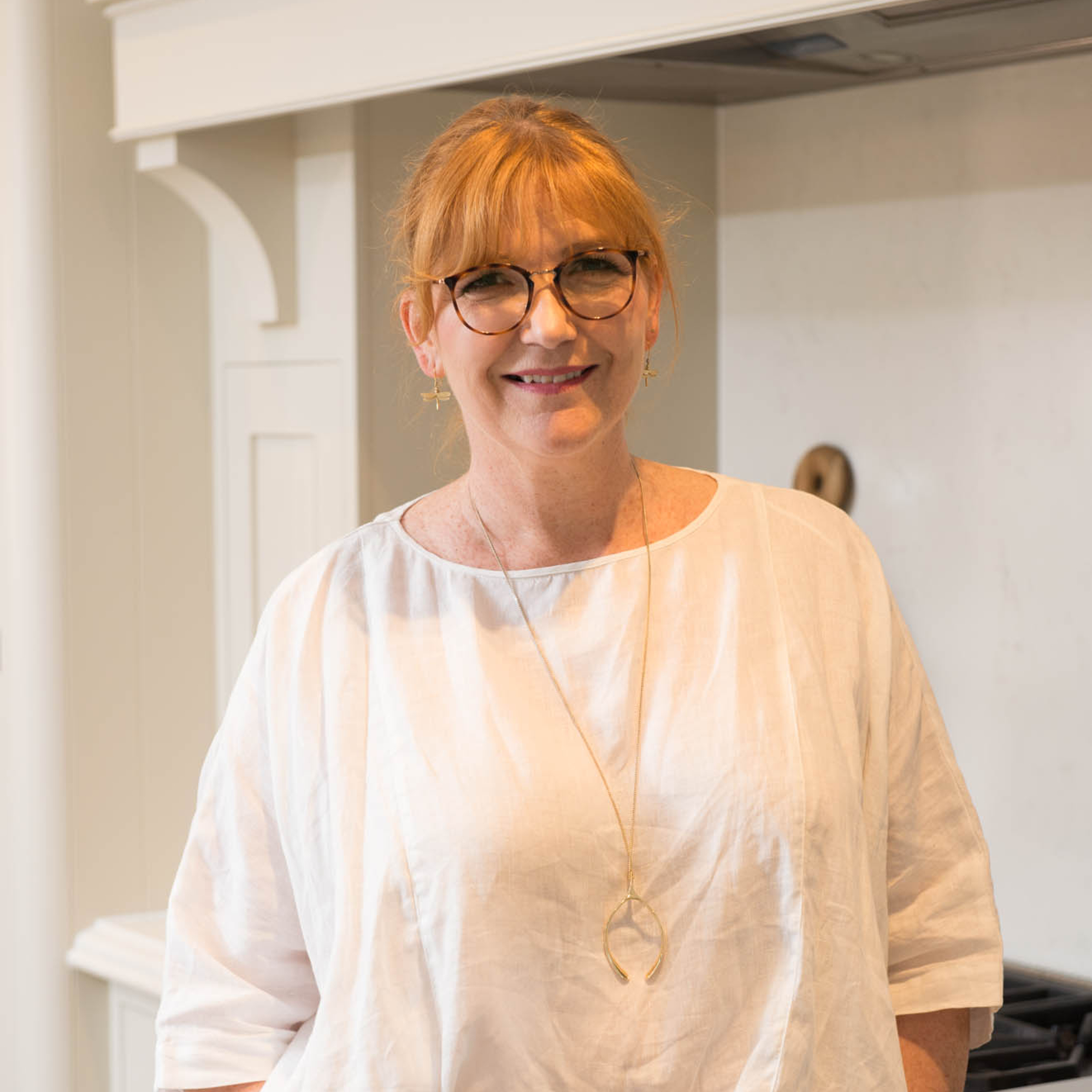
Helen Lord is the founder of Used Kitchen Exchange (UKE), the company she started in 2015 after being inspired by her own fruitless search for an affordable kitchen. Passionate about encouraging consumers to rethink how they buy a kitchen thus not only saving them thousands of pounds but also helping to offset their carbon footprint.
Companies like The Used Kitchen Company and Used Kitchen Exchange find new homes for used kitchens, from both individual homes and ex-display kitchens from showrooms. They'll likely play a big role in your project, so it's a good idea to get familiar with them before you begin.
You might have not previously thought it, but second-hand kitchens can offer wow-factor style and high-end appliances from brands including Gaggenau, Siemens and Miele. These are almost ‘drop-in’ kitchens, ‘ready to go’ from the moment they are purchased.
Sign up to our newsletter for style inspiration, real homes, project and garden advice and shopping know-how
How to buy a second-hand kitchen: an expert guide
When learning how to buy a second-hand kitchen, the first priority is determining whether the new kitchen will fit your current layout. You will need to understand the space you are working with – identifying where the doors, windows and utilities are is a great starting point.
Also make a note of the height of your ceilings so you can shop for units of the correct size. Once you've ticked these boxes, it’s simply a matter of matching the units available against the layout you want. You can buy a kitchen that's a little bigger than what you need to have more flexibility with reconfiguration.
The sound advice from the experts is to manage expectations. When buying a pre-installed or pre-owned kitchen you will expect to see signs of use. Therefore a professional clean post installation is highly advisable – this is definitely worth the effort when you consider the overall savings, and will help to create the feeling of newness we sometimes miss when shopping second-hand.
Keeping your current kitchen layout is certainly the easier way to go about the project. But if you are re-configuring the layout, bear in mind that you may need to change everything, including end panels, kickboards and decorative trims if they have screw holes or cutouts. This will be a more costly job and take more time, but worth the extra labour if you're unhappy with your current kitchen layout.
Top tips for measuring second-hand kitchens

Measuring out to design a kitchen doesn't have to be daunting. Helen Lord, Founder of Used Kitchen Exchange, offers some helpful tips to make the job easier.
'A great hack is to use graph paper and post-it notes. Mark out your kitchen to scale on a piece of graph paper and get yourself a scale ruler and cut out post-it notes to the sizes of your cabinets. Write on them what type of cabinet it is and then you can play around with the layout as much as like, sticking and re-sticking them in place until you have the right layout for you.'
There's scope for creativity here. Let your imagination guide you, and don't restrict yourself too much by thinking that certain cupboards belong in specific places. This is your chance to refresh your kitchen and get it exactly how you want.
Awkward gaps and smaller spaces left over can be turned into useful spots too. 'Fill any smaller gaps leftover with a 300mm wine cooler, homemade wine rack or tray store,' Helen suggests.
How to ensure the quality and condition of pre-used cabinets and worktops
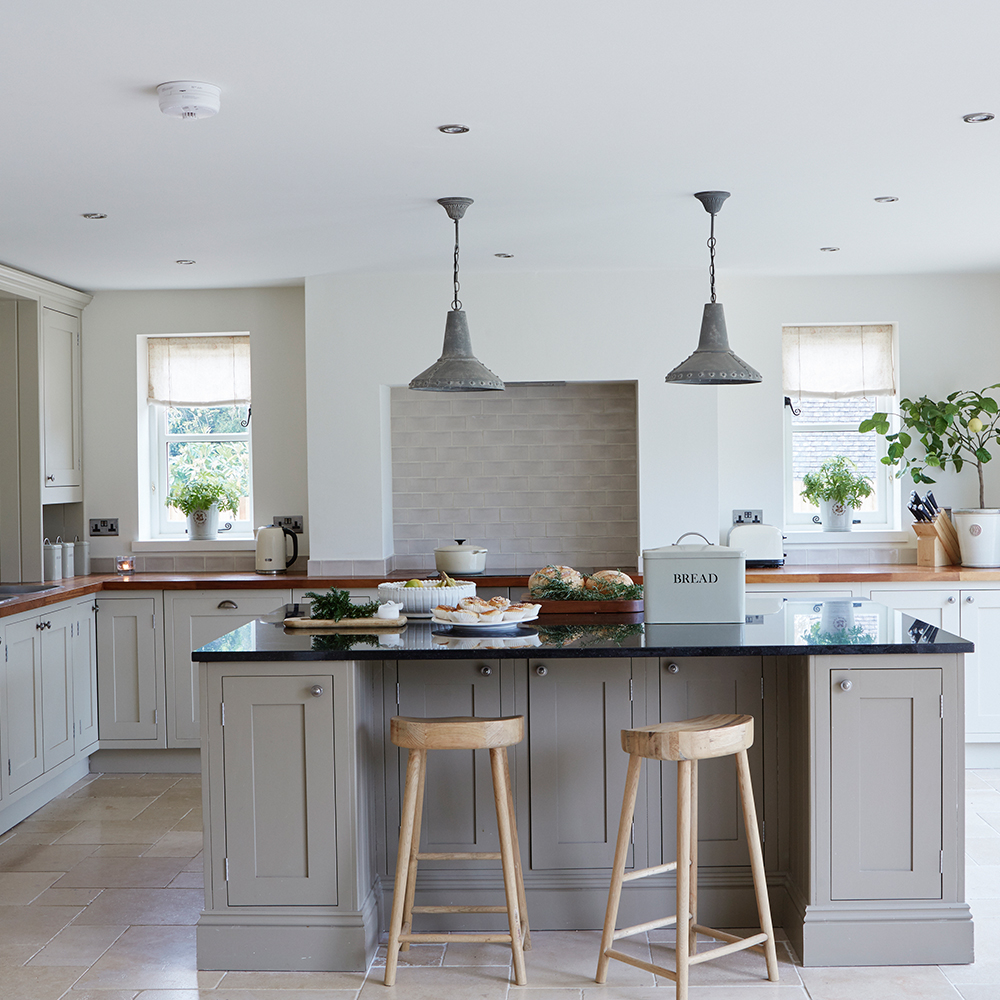
There are some simple steps to help ensure that the kitchen you want to buy is in good condition. It's an expensive investment, therefore it's only natural to feel nervous about getting the best quality for your money. Ask to view the kitchen prior to purchase, in order to check the condition. If you're buying online, and can't view in real life, make sure there are plenty of photos showing aspects of the units up close.
You're looking at the quality and condition of cabinets, doors and countertops. Double-check that you have the correct measurements for each unit.
Look inside the cupboards, assessing the potential everyday wear and tear. Whilst cupboards can be replaced, they cannot be repaired, so there may be a cost consideration here.
Check for water damage – especially around the sink area, as again this can't be repaired. With MDF doors you're looking for any signs of swelling or bubbling, normally caused by unrepairable water ingress. Another common problem is heat damage, especially with vinyl doors as it results in the vinyl peeling away, so be sure to check the doors next to any sources of heat i.e. cookers, dishwashers and kettles.
'A good tip is to look for cabinets that are 18mm thick or more and are of solid construction (not flat packed),' says Helen. 'Cheaper cabinets may be as little as 15mm thick – not ideal for re-use and have a much shorter life expectancy.'
Note that if the kitchen you are looking at has laminate worktops, be prepared to look into other worktop ideas because the material is almost impossible to reinstall.
What material is best: wood or gloss cabinets?

Painted kitchen ideas or wooden kitchens offer more flexibility when buying second-hand compared to units with glossy finishes. 'Painting is always an option, and will make it possible to change door knobs etc or add additional cabinetry if the kitchen isn’t quite big enough,' advises expert Helen.
Wooden or laminate kitchens provide a suitable base for painting or vinyl wrapping, and as such can be transformed to create a completely new look. Changing door knobs is an easy way to transform old cupboards, plus you can learn how to fit a door handle yourself to save on costs.
'Modern lacquered kitchens don’t have this level of flexibility so your choice may be limited to the size and style that is exactly right for you,' Helen says. That is unless your chosen kitchen is in current stock at the retailer, then it can be added to.
Professional dismantle is vital

Though you are learning how to buy a second-hand kitchen yourself, it's important to remember that you will need some professional assistance. Removing a pre-installed kitchen is a technical job, requiring experience and knowledge.
'Any shortcuts here may have dire consequences and ultimately damage your kitchen,' warns Helen. Removing stone worktops for instance takes a lot of knowhow and specialist tools. Not many people know that they can't be transported flat or they will break.
Consider collection and delivery
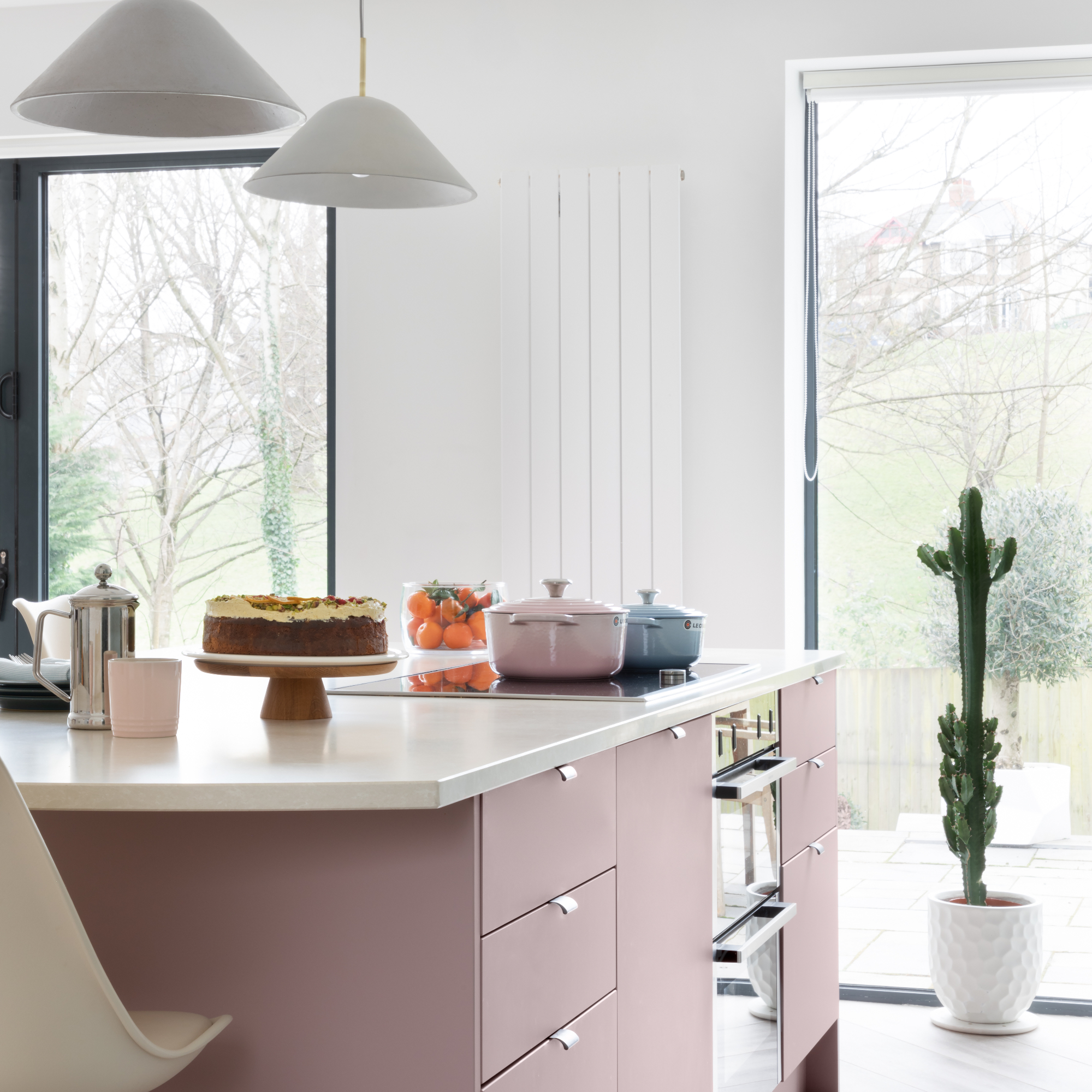
When buying a new kitchen the normal process of delivery is all taken care of. You can expect the kitchen to arrive in stages; first cabinets, then appliances, then worktops. But the same rules don't apply to second-hand kitchens. You'll need to source a reliable courier yourself for everything at once.
It's unlikely that a local ‘man with a van’ will have the skill or insurances to collect and deliver a kitchen safely. 'Kitchens are very heavy and moving a whole kitchen in one go takes skill, knowledge, experience and the correct insurances. Seek professional help/advice for this to avoid any damage to your kitchen, or worse still to yourself.'
With installing the kitchen, you can do this yourself if you feel you're up to the job, but it's always advisable to have it fitted by a qualified installer. You can find a qualified professional through the British Institute of Kitchen, Bedroom and Bathroom Installers (BiKBBi). You're still saving yourself a lot of money through shopping second-hand, and paying a professional to get the job done right would be money well spent.
Used Kitchen Exchange offer both professional dismantling and delivery of kitchens as part of their service, so if you're shopping with them for second-hand kitchens, they can essentially take care of the whole process from start to finish.
The benefits of using reclaimed wood for cabinets and worktops
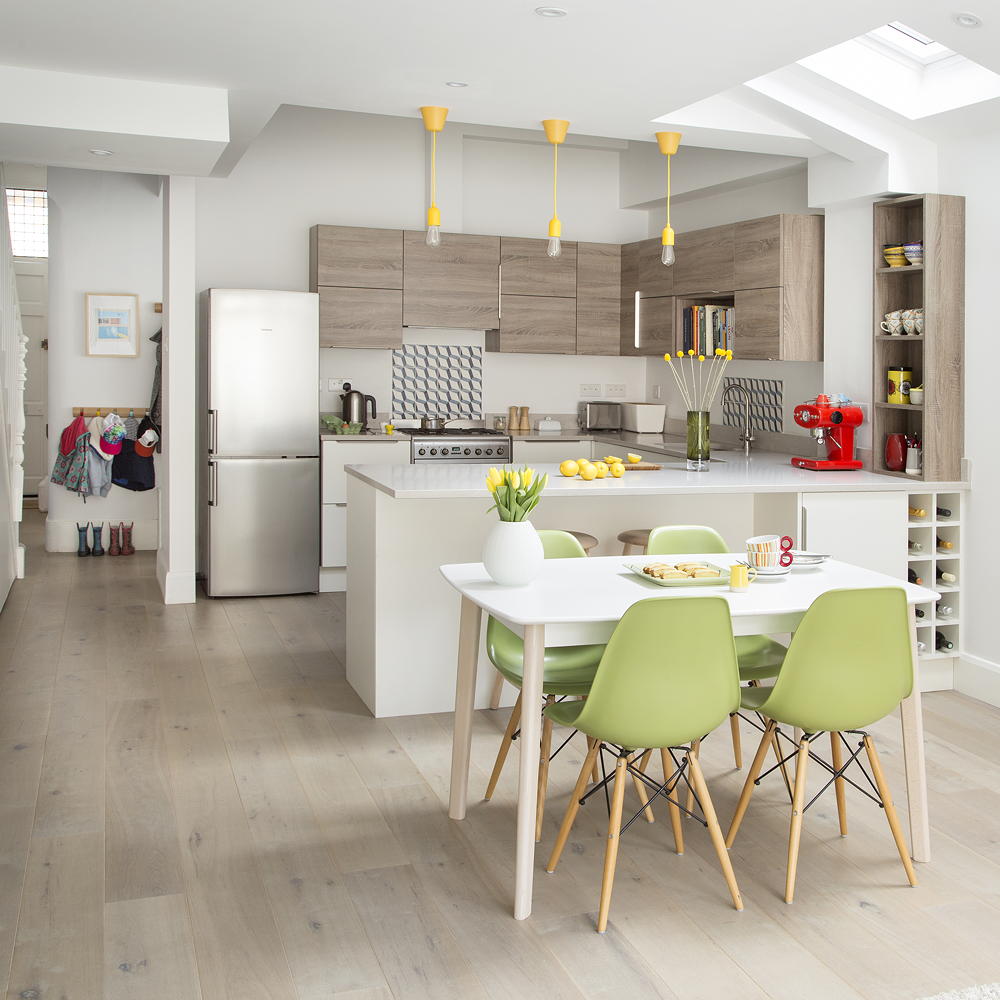
Using reclaimed wood is the fastest way to create a fashion-forward kitchen that’s loaded with laid-back, rustic charm, adding character to neutral white or cream kitchen ideas. And it's ideal for second-hand kitchen ideas because it's low maintenance and ages beautifully. Any damage or defects in reclaimed timber can be sanded away and re-oiled, or left intact for a little more history.
The grain is much denser, and thus tougher, than modern fast-grown timbers too. It comes in various forms, such as old flooring planks, scaffolding boards and railway sleepers, so opportunities for creating an individual and unique kitchen are endless.
Is reclaimed wood expensive?
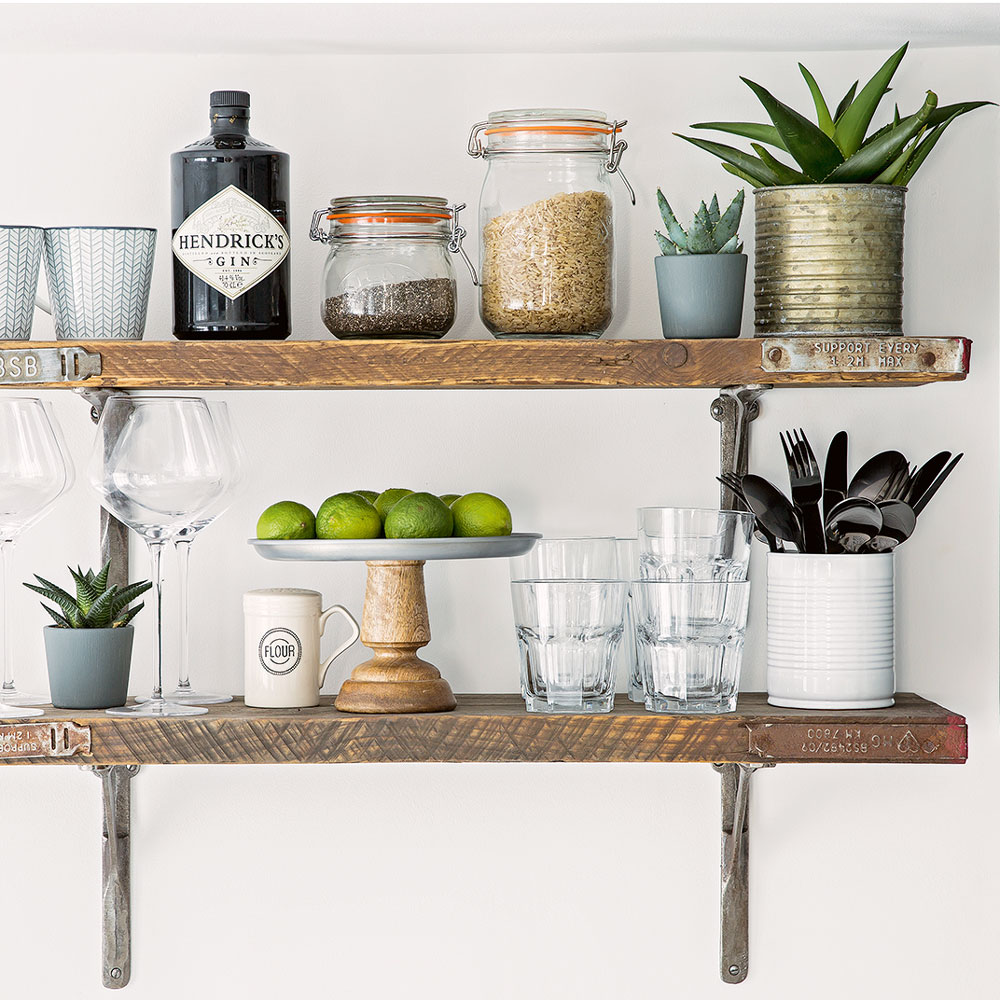
The cost of reclaimed wood depends on the type of timber. Old scaffolding planks and sleepers are generally cheaper than solid oak beams, for example. Timber that costs less to begin with, such as pine or upcycled pallets, will usually be more affordable too.
Is it worth buying a second-hand kitchen?
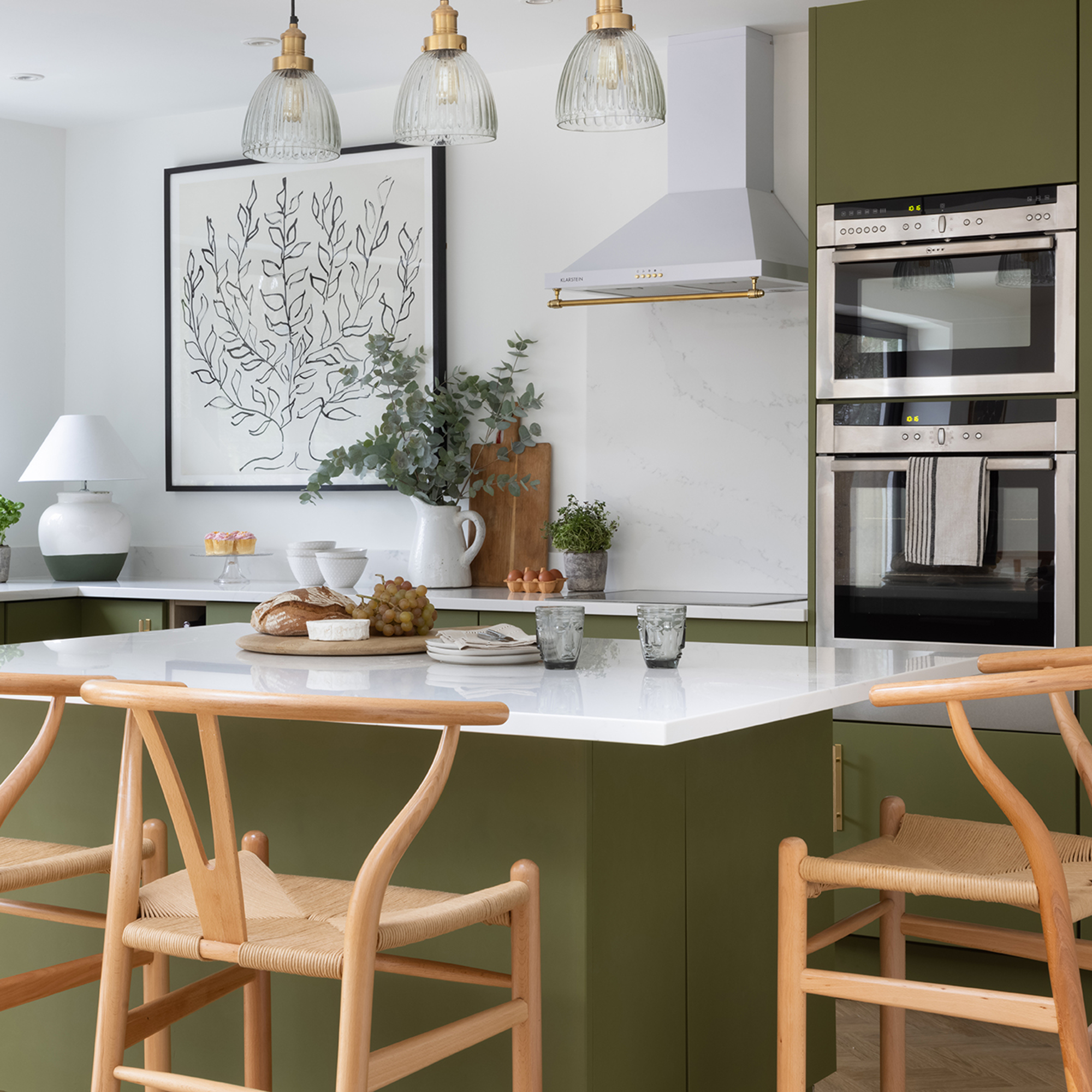
The short answer is yes. Former Changing Rooms presenter Linda Barker is an advocate of buying second-hand kitchens, and she often urgers her Twitter followers to forgo something shiny and new in favour of a pre-loved alternative.
'The most important tip I can give you on where to go for your new kitchen is to think about whether you actually need a brand new one at all', she writes. 'Just spend a cup of tea’s worth of browsing time on @UsedKitchenEx and then decide how best to spend your money.’
Steph, the most important tip I can give you on where to go for your new kitchen is to think about whether you actually need a brand new one at all. Just spend a cup of tea’s worth of browsing time @UsedKitchenEx & then decide how best to spend your money. https://t.co/wdApbLdwZYJune 24, 2019
Used Kitchen Exchange allows you to buy pre-loved and ex-display kitchens for less than half of what it would cost you to buy one new. They are the only kitchen company in the world to hold the BCorp Certification, and earlier this year they were presented with The Queens Award For Enterprise For Sustainability.
'We have been able to offer customers savings of up to 92% on a kitchen,' says the company's founder Helen. 'Of course, this will vary depending on a number of factors. An older kitchen that is still in really good condition, or a showroom liquidation clearance where speed is required often offers up opportunities for the largest savings.'
Buying a second-hand kitchen doesn't mean you're spending money on something that is long past its use-by date. The average age of used kitchens sold by UKE is around seven years, but some are a lot less.
'What all our Approved Used Kitchens have in common is they all have minimum wear and signs of use,' says Helen. 'We also sell ex-display kitchens which in general have never been used.'
Can you sell a second-hand kitchen?
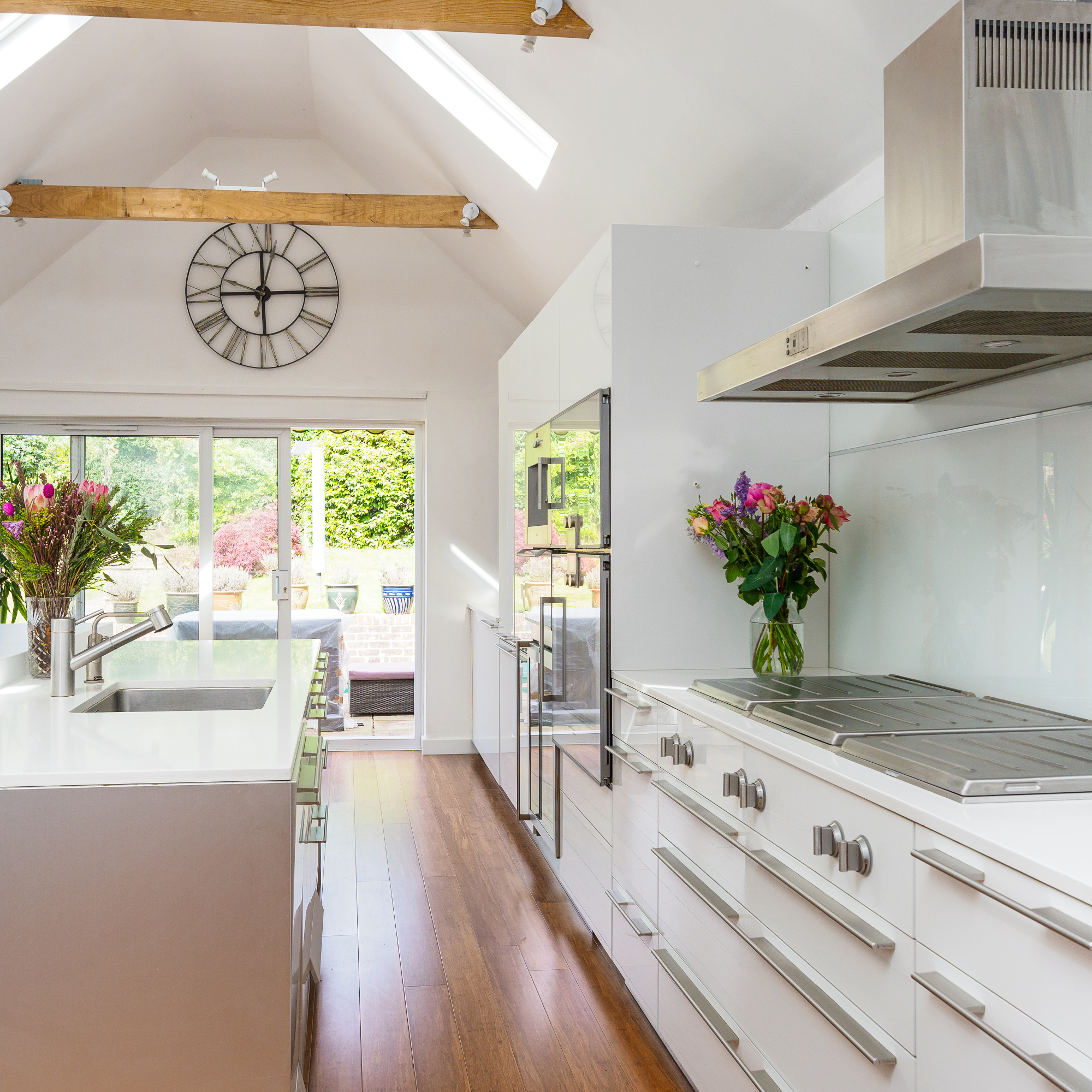
If you are changing your kitchen, selling your current one is a great way to make some extra cash, and means it won't end up in landfill. There is a bit of a process to be aware of though as it's a little different to selling or buying second-hand furniture. Ideally, you need around six weeks to sell your kitchen, so if it needs to be removed sooner than that, it's going to be a little more tricky.
To avoid any damage, you'll need to organise professional dismantling and delivery of your kitchen to a new buyer. The utilities, including gas and electricity, will need to be capped off separately by qualified tradespeople before dismantling takes place. Consider also that you may need to store your old kitchen somewhere if it doesn't sell before it's time to get your new one installed.
'The valuation of your old kitchen will depend on several things: age, condition, original purchase price, brand and desirability,' explains Helen. 'As a cautious valuation guide, halve the original purchase price and take £1000 off this figure for every year you have used it.'
Selling your old kitchen via a specialist service such as UKE means you will have the benefits of expert know-how and market valuation upfront. They will also take professional pictures and measurements for you, which you'd have to do yourself if you were selling on a generic selling site like eBay or Gumtree. There's also the comfort of no sale no fee.
'Wherever you're selling your kitchen, it's important to be honest,' Helen says. 'Wear and tear will be commensurate with age, however, if something is not working, or is damaged, even the smallest details such as a fridge light, include this in the description. This won’t put a potential buyer off but should prevent any issues when they come to collect.'
Tamara was Ideal Home's Digital Editor before joining the Woman & Home team in 2022. She has spent the last 15 years working with the style teams at Country Homes & Interiors and Ideal Home, both now at Future PLC. It’s with these award wining interiors teams that she's honed her skills and passion for shopping, styling and writing. Tamara is always ahead of the curve when it comes to interiors trends – and is great at seeking out designer dupes on the high street.